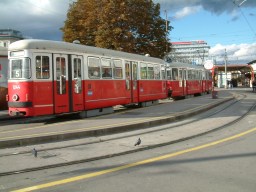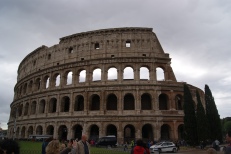 This post is by Nancy Jardine.
This post is by Nancy Jardine.
Authors are often quoted as having the most amazing imagination but I’m not always sure that’s an instinctive attribute for all writers. Personally speaking, I need a little bit of help to kick start my imagination when I’m writing. Once I get that little extra push, I’m right into the scene and then my characters can take over in their imagined setting.
When I write my contemporary mysteries my imagination is helped by my memories of a place where I want to scene set. In my contemporary mystery Topaz Eyes, I used a number of locations in cities that I’ve visited. When I decided to have one of the ‘cousins’ in the story live in Vienna, Austria, I just had to turn on my memories of central Vienna and the wide open old streets popped up.

But I also know that my memories can be fickle and a bit selective so in the interests of accuracy I turned to the internet to give me current photos of where I was thinking of. That little research on the internet was useful when I was writing Topaz Eyes because the trams I was seeing in my head were red during my visit in 2002. The current ones in the area I was writing about have been the bright yellow tourist designed ‘Ring Trams’ for some years now. (c. 2010?)

There are still red trams operating on the original tram lines in Vienna but they’re not where my scenes are. After my research on the internet, as I wrote the scene where my main female character Keira was being pursued by her unknown stalker, I was ‘seeing’ her escaping from a bright yellow tram.
In my historical writing it’s not so easy to create visual images for my locations. I want authenticity and credibility in my stories but I can’t look back at photographs of my places to see what that landscape was like 2000 years ago. The contours may be largely the same but the vegetation is unlikely to be similar since recent centuries of farming (since the 18th century) and forestry methods in north east Scotland have altered the original picture. That means I need to seek help from other places.

I can add things that were already very ancient like standing stone circles of the stone and bronze ages, or stone hillforts, or stone brochs but my imagination definitely has to work a lot harder on things that were made of wood- like Celtic roundhouses and crannogs which have mostly deteriorated to nothing over the millennia.
What helps sometimes with my ‘scene imagining’ for 2000 years ago Scotland is looking at the artwork of some relevant artists like the famous Angus McBride, or from illustrated children’s non-fiction history books of which I still have a large selection!  But I need to remember it’s that particular artist’s interpretation. Other artists, archaeologists and historians may interpret things differently. And so do I!
But I need to remember it’s that particular artist’s interpretation. Other artists, archaeologists and historians may interpret things differently. And so do I!
In Book 4 of my Celtic Fervour Series, when writing about my character General Agricola thinking about the Emperor Domitian and the Senate being back in Ancient Rome, I find it a little helpful to look at ancient sculptures. The friezes, and the carved fascias of ancient buildings also give me clues as to what the environment was like. Things my character Agricola is remembering as they were almost 2000 years ago. My visit to Rome last year helps me a bit but of course, what I saw last year is only what has survived and not the Rome of Agricola’s era in all it’s colourful glory.
 Virtual imagining processes of ancient places are fabulous and I love to see any that are shared with me on Social Media. Looking at Pompeii, or Portus (the artificial harbour of ancient Rome), or Athens or Ancient Egypt is fascinating.
Virtual imagining processes of ancient places are fabulous and I love to see any that are shared with me on Social Media. Looking at Pompeii, or Portus (the artificial harbour of ancient Rome), or Athens or Ancient Egypt is fascinating.
So, last week, when I saw a FutureLearn course entitled ‘Rome: A Virtual Tour of the Ancient City being advertised I just could not resist enrolling. Click the link above, scroll down to the little video window and see what’s on offer. You might like it, too but there’s not much time to enrol since it starts next week, 9th October! (I loved my last year’s FutureLearn course on Hadrian’s Wall’.)
I’m hoping this Rome course will give me some ideas for polishing my character named Agricola a little better, or that it’ll be useful for the next book in the series BUT—most of all I hope that it’ll be fun!
Guess I have to get my head down now and finish my current writing!
What are your thoughts on Virtual imaging? Do you like seeing the way gifted visual imaging creators present these ancient places?
Nancy Jardine writes: Contemporary romantic mysteries; time travel historical for early teens and historical fiction for adults. She’s a member of the Romantic Novelists Association, the Scottish Association of Writers and the Federation of Writers Scotland.
 You can find her at these places:
You can find her at these places:
Blog: http://nancyjardine.blogspot.co.uk Website: http://nancyjardineauthor.com/ Facebook: http://on.fb.me/XeQdkG & http://on.fb.me/1Kaeh5G
email: nan_jar@btinternet.com Twitter @nansjar
Amazon Author page http://viewauthor.at/mybooksandnewspagehere
Nancy, when I write I try to walk the area I’m writing about. Pretty simple when it’s here in Colrorado or the west. Those overseas, like you I have to rely on photos an other material to get a feel for the place. The classes you talk about sound fabulous. I’ve used YouTube also for some short videos and history. They may not always be 100% accurate, but the visuals are priceless.
Here’s to the ‘writers imagination’ and all tha goes into creating the worlds we see in our mind and share with the world. Doris
LikeLiked by 1 person
Hi Doris- I forgot that I sometimes use YouTube as well.
LikeLike
Writing about settings for your book reminded me of my note taking for book 2 of my Civil War series. Settings include Richmond, Va.; London and Liverpool in Britain. I knew next to nothing about London and Liverpool in the mid-19th century. I spent a lot of internet time reading about the places, and I think I did a decent job of recreating the places.
LikeLiked by 1 person
LOL. Maybe I’ll ask you about Liverpool if I need info, Mike. My paternal grandmother was born in Liverpool,1870s and if I ever get around to writing about her, I guess I’ll be finding out about Liverpool.
LikeLike
Nancy, I enjoyed reading your insights on how you created you books. I’m working on my second novel now. I got the idea from a story I heard during a writing workshop not too long ago. Will see what happens.
LikeLiked by 1 person
Oh, that sounds great, Abbie! Ideas come from many different situations.
LikeLiked by 1 person
Loved all the ideas you presented on how to research for settings. The novel I am working on is set in the Bitterroot Valley of MT and my husband and I went up and camped a few days in that valley a number of years ago to get a feel for it. Also, the internet is such a blessing for research. The courses you told about sound very interesting.
LikeLiked by 1 person
Montana sounds like a fabulous state to visit, Neva. One of these days…
LikeLike
Thanks Nancy, I’ll check it out. I like the virtual tours. Cher’ley
LikeLiked by 1 person
Interesting post, Nancy. I realized recently that in nearly all the fiction I’ve written, there’s a cow or a river or a cotton field–things from my childhood. I don’t know that I could write about anywhere else. But I have to use the Internet to find what Brahma bulls eat and how much they weigh and when cotton is planted and when the first bale arrives at the gin… things I would know if I hadn’t spent all my time with my nose in a book. I’ve never thought much about virtual imaging. I would love to see what the area where I grew up looked like before settlers came from the eastern part of the U.S. and cleared it for farming. And now that I’ve looked over FutureLearn, I want to take courses in Robert Burns and Shakespeare and writing fiction and Wordsworth and… You’ve really started something.
LikeLike
That’s great to know Kathy! There are loads of other courses I’d love to do as well. 🙂
LikeLike
I loved reading about how you get your ideas and the virtual images. I try to imagine the way things were years ago, but you’ve found a new way of doing it! Very interesting. Barb
LikeLike
I’m hoping that I love my new course without blowing my mind because the technology really is interesting. Barb.
LikeLike
Nancy, I love how you find your inspiration. I don’t travel – not by choice- so I rely on research. I research everything I can of a surrounding area, but the center of my location is usually a fictional town. I’m chicken. I don’t want to offend anyone or get it all wrong. I do extensive research on the “times”, like cars, music, fashion, etc. In my first novel, Moshe’s War, I had the very first scene using a musical title that turned out to not have been released until 3 years later than when my story was to take place. I had to quickly go back and change it to another song. I had also written a scene where my main character meets Charles Manson. I described the Nazi symbol on his forehead. Then I learned he didn’t get the symbol until after he was in prison. Oops! Research and rewriting goes hand-in-hand for me.
LikeLike
Debra (?)- Even when I’ve visited somewhere I still check it out just to make sure it’s still as I want to write about it. I’m all for thorough research as well. 🙂
LikeLike
I admire how you absorb yourself into your work, Nancy, through personal and other types of research, including taking courses on ancient times. Since I write mostly about what I know, whether from my own life or my pets’ lives, the novel I’m working on goes into more depth about various subjects (puppy mills, firefighting, etc) so I will need to do some extra research (and have been regarding puppy mills) in order to be accurate and credible. The craft of writing is amazing with all its ins and outs! Great post!!
LikeLike
Exactly so and well put,Gayle. So many avenues to explore!
LikeLike
Hope your course was informative and very helpful. I tend to do most of my research before trip rather than before writing. The more I know about critters the easier it is to fins them and interact with them. Thanks for sharing.
LikeLike
I always intend to do loads of research before I travel but it doesn’t often happen. Though, it’s better if I do some because it means so much more when I’m there. I can then add details to it when I get home.
LikeLike